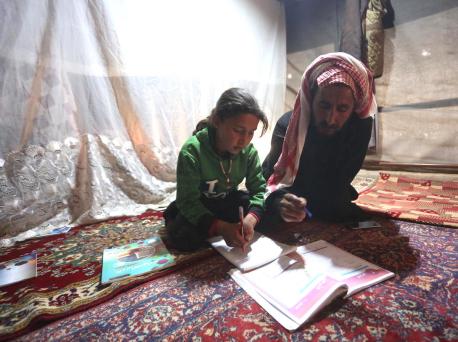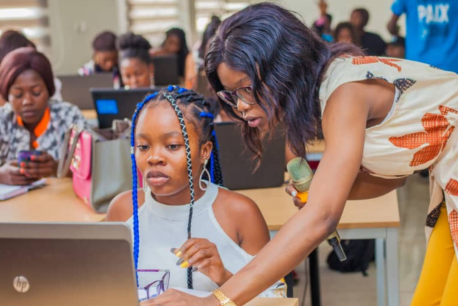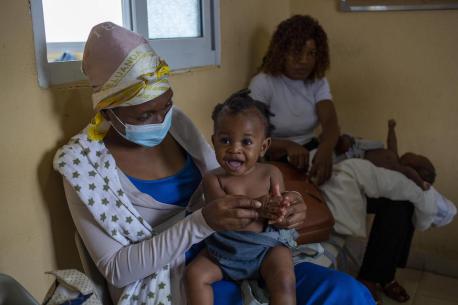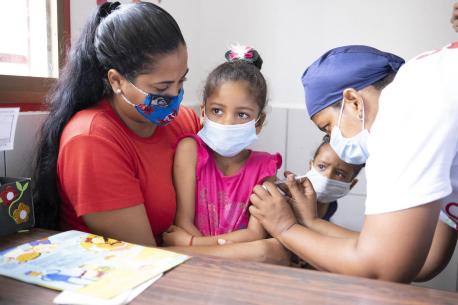
How to Keep Children Learning During a Pandemic
Robert Jenkins, UNICEF Global Chief of Education, on the challenges of remote learning and what parents can do to support their children.
Since the coronavirus pandemic began, school closures have disrupted the education of 1.5 billion children and young people globally. Some countries have begun to cautiously reopen schools, but nearly 70 percent of the global student population — more than 1.2 billion children in more than 160 countries — remain out of the classroom.
Below, Robert Jenkins, UNICEF Global Chief of Education, explains some of the ways UNICEF is working to help teachers, children and parents adapt to remote learning, while establishing guidelines for what countries will need to do to ensure that students, teachers and other staff can return to the classroom safely.
What is UNICEF doing around the world to keep kids learning during the COVID-19 pandemic?
ROBERT JENKINS: UNICEF is supporting a wide range of tools to support remote learning, depending on the context. They range from low- to no- tech options such as delivering learning materials to children at home, and supporting the creation of education programs on radio and TV. Then there are "higher tech" learning tools to reach children who have access to the internet in their homes.

In Côte d'Ivoire, UNICEF has been working with the Ministry of Education on a ‘School at home’ initiative that includes taping lessons to be aired on national TV and radio. © UNICEF/UNI327062/Frank Dejongh
What are the primary tools that teachers need to successfully engage students at a distance?
ROBERT JENKINS: The challenge is providing the right learning tool in each context. "Live instruction" is indeed very powerful, but often not possible, and of course comes with the downside of being fixed in terms of scheduling, at a time when many families need greater flexibility in how and when their children can learn. The key is to start with the learning outcome and then work backwards, adopting the right tool for each context. That shows the most promising results.
What are you hearing from educators and school systems UNICEF works with? How are students adapting to this new learning environment?
ROBERT JENKINS: I'm really inspired by what children, teachers and my UNICEF colleagues are doing around the world. In Somalia, lessons are being broadcast over radio and television and recorded lessons are being uploaded onto solar-powered tablets. In Mongolia, we helped to produce TV lessons in the local languages, Tuvan and Kazakh, which reached around 13,000 children from ethnic minority groups in the first month of the crisis.
In Bangladesh, UNICEF is helping the government share learning content over TV, radio, mobile phone and internet platforms. In Paraguay, we've developed video and audio content for children between the ages of 0 and 6. And in Timor-Leste, Ukraine and Kosovo, they've launched the Learning Passport, a really exciting partnership between UNICEF and Microsoft to help children access their school curriculum remotely.

On April 15, 2020 in Kyiv, Ukraine, 7-year-old Zlata works on schoolwork from home during school closures to prevent the spread of COVID-19. Ukraine is one of the first countries to implement the Learning Passport, an expanded global online learning platform developed by UNICEF, Microsoft and the University of Cambridge that provides key resources to help students continue their education. © UNICEF/UNI321760/Filippov
How can parents help children adjust to remote learning?
ROBERT JENKINS: Here are some simple tips we've been recommending to parents: Try to establish a routine that factors in learning, playtime and reading. Take your time. Start with shorter learning sessions and make them progressively longer. Have open conversations. Encourage your child to ask questions and express their feelings. Establish rules together about how, when and where the internet can be used and set up parental controls where necessary, particularly for young children. Find out how to stay in touch with your child's teacher or school to stay informed, ask questions and get more guidance.
What are some of the considerations for reopening schools?
ROBERT JENKINS: When schools reopen, we can't simply return to business as usual. Before the pandemic, we already had a learning crisis with more than half of all children in low- and middle-income countries unable to read and understand a simple story by the end of primary school. We must ensure that when schools reopen, every child is included and learns; every child has access to school-based health, hygiene and nutrition services; and every child is connected to the internet. This global disruption can be a catalyst for a once-in-a-lifetime transformation in our schools, so that every child learns the skills they need to succeed in life, school and work.
The key is to make the "new normal" better for children. That is, better learning outcomes, but also more support for children in terms of their health and well-being.
Your generous contribution will help UNICEF be there for vulnerable children during the COVID-19 pandemic.
Top photo: On April 9, 2020, 9-year-old Maria follows a pre-recorded lesson on her father’s mobile phone in a tent at the Kili IDP camp in rural Idlib, Syria. © UNICEF/UNI322672/Suleiman
HOW TO HELP
There are many ways to make a difference
War, famine, poverty, natural disasters — threats to the world's children keep coming. But UNICEF won't stop working to keep children healthy and safe.
UNICEF works in over 190 countries and territories — more places than any other children's organization. UNICEF has the world's largest humanitarian warehouse and, when disaster strikes, can get supplies almost anywhere within 72 hours. Constantly innovating, always advocating for a better world for children, UNICEF works to ensure that every child can grow up healthy, educated, protected and respected.
Would you like to help give all children the opportunity to reach their full potential? There are many ways to get involved.





